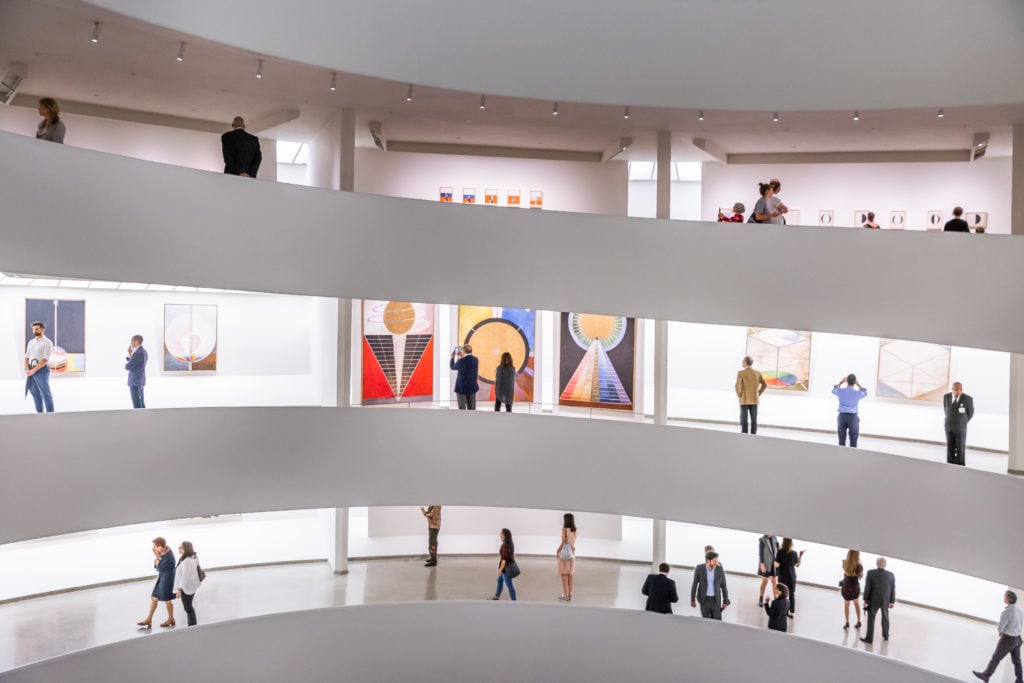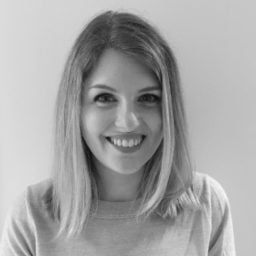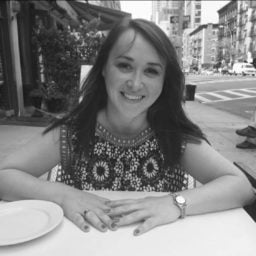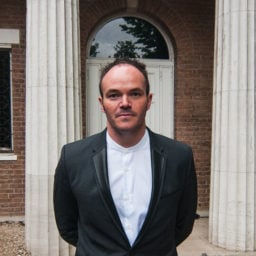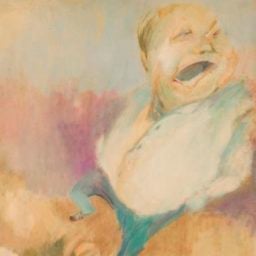
Our research reveals just how little art by women is being collected and exhibited by museums. But some institutions are beginning to address the problem—and starting to find solutions. Here are four case studies.
The Pioneer: Pennsylvania Academy of the Fine Arts, Philadelphia
In recent years, institutions including the San Francisco Museum of Modern Art and the Baltimore Museum of Art have made headlines by selling off the work of canonized white men to raise money to diversify their collections. But few are aware that another museum quietly undertook a similar project way back in 2013.
Now, the Pennsylvania Academy of the Fine Arts serves as a case study for how such moves can create permanent and profound change within an institution.
PAFA’s decision to auction Edward Hopper’s East Wind Over Weehawken (1934) at Christie’s for $40.5 million was deemed controversial at the time. But the museum and art school has gone on to use the proceeds from that sale to consistently acquire significantly more works by female artists each year than institutions with far larger budgets, such as the Brooklyn Museum, the Museum of Fine Arts, Houston, and the Dallas Museum of Art. (Recent additions to PAFA’s collection include works by Mary Cassatt, Rina Banerjee and Pat Steir.) The museum has also acquired more works by artists of color than almost any other institution we examined in our 2018 study about the representation of African American artists.

The facade of the Pennsylvania Academy of Fine Arts in Philadelphia, PA. Courtesy of PAFA.
“We are telling a very comprehensive story about American art here, and women and artists of color play right into it—there are no outliers here,” the museum’s director Brooke Davis Anderson says.
The institution’s previous director, Harry Philbrick, who initiated the diversification project before Anderson took over in 2017, strongly believed that inclusion was a core part of the museum’s mission and machinery—an emphasis Anderson has sustained. She notes that PAFA was employing female faculty and showing the work of women before 1920, the year white women earned the right to vote. “We are just doing something that needs to be happening more,” Anderson says. “It is long overdue and should just be the course of museums in general.”
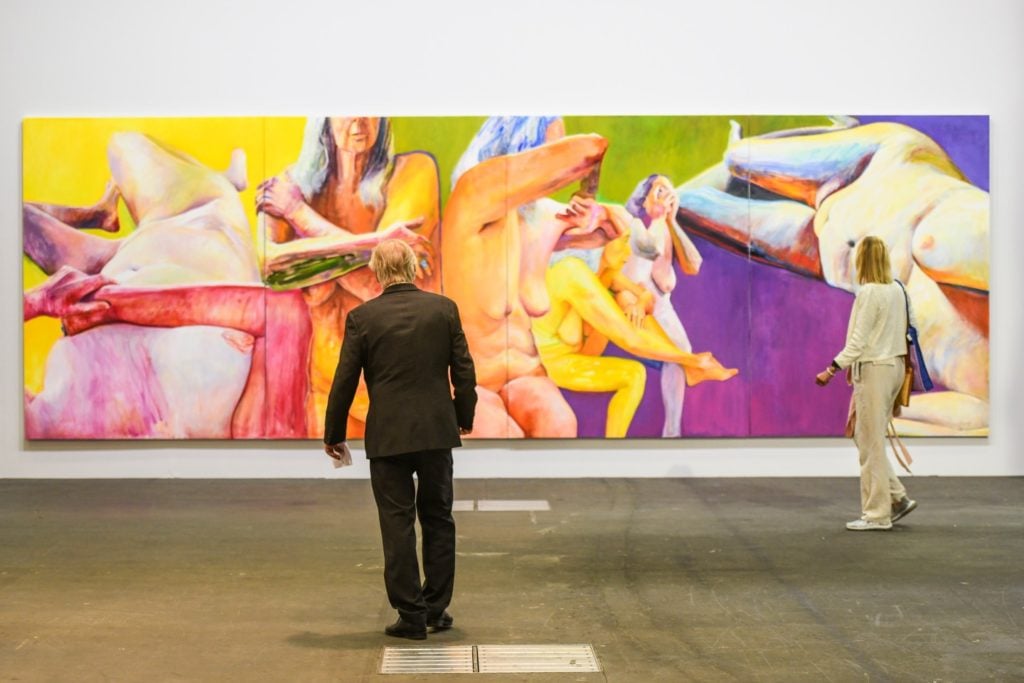
Installation view of Joan Semmel’s Skin in the Game (2019) at Art Basel Unlimited in 2019. Courtesy Alexander Gray Associates.
Currently, the museum’s exhibition schedule is not as equitable as its acquisitions record: just 9 percent of its shows over the past decade have been of work by women. But Anderson has a five-year plan to tip the scales: its program will present women artists (including the first major retrospective of Joan Semmel in 2021) in 75 percent of its exhibitions through 2024, while artists of color will be the focus of 50 percent of the exhibitions in that same period.
The institutional commitment to broadening the collection signaled by the board in selling the Hopper was “one reason I was interested in this job,” she says. “The resources from the Hopper sale enabled us to up our game—which we have really done.”
The Risk-Taker: The Solomon R. Guggenheim Museum, New York
When the Solomon R. Guggenheim Museum in New York set out to present an exhibition of work by a little-known Swedish mystic painter named Hilma af Klint last year, its leadership feared it would be a flop.
“I thought people would be unhappy that they weren’t coming to a Klimt show, they wouldn’t be able to pronounce Hilma, they wouldn’t care,” says the Guggenheim’s director Richard Armstrong. Instead, the show attracted more than 600,000 people, becoming the museum’s best-ever attended show. It also drew the youngest audience of any exhibition since the museum started to measure visitor demographics.
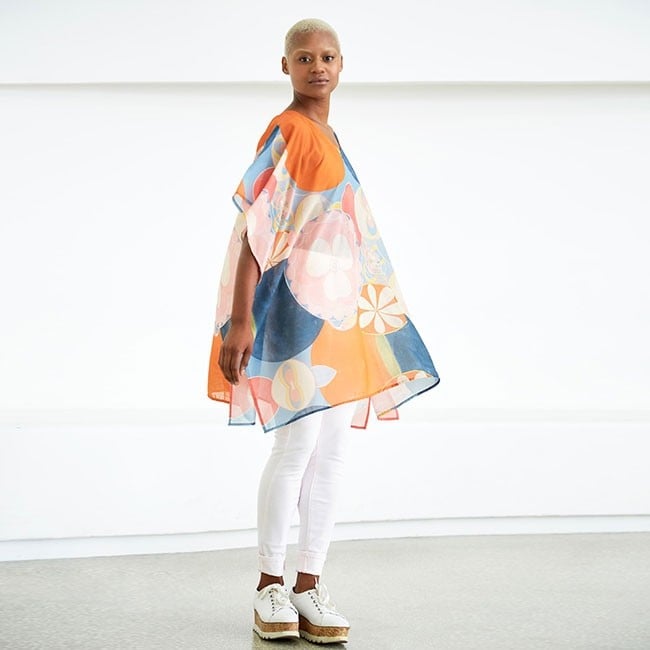
The “Hilma af Klint Childhood Tunic, Unisex,” available at the Guggenheim Store.
The show was a moneymaker in more ways than one. During its run, the Guggenheim saw a 34 percent increase in membership; af Klint-themed products accounted for more than 40 percent of sales at the museum store; and the catalogue sold more than 30,000 copies, a new record.
The success of the show defied traditional wisdom about what people want to see. This was, after all, a show of an unknown, foreign, female artist whose work is unsupported by the market. (In her will, af Klint insisted that her huge body of abstract works should be kept secret for 20 years, and that none of the works should ever be sold separately.)
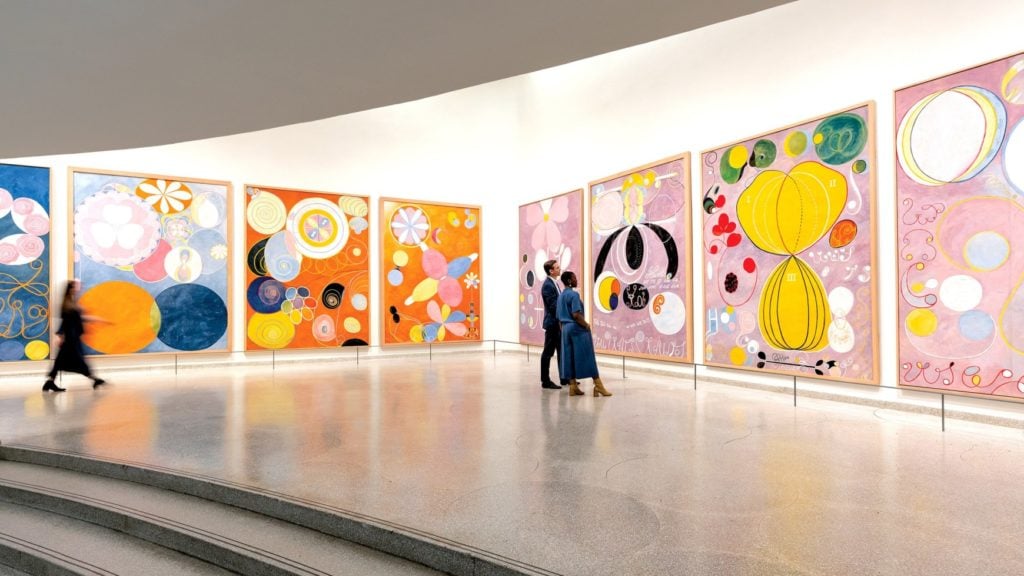
Installation view, “Hilma af Klint: Paintings for the Future.” Photo: David Heald © Solomon R. Guggenheim Foundation.
But what the show did offer was a sense of genuine discovery. Contrary to what the history books have told us, af Klint could be considered the first great abstract painter, pre-dating Wassily Kandinsky—which calls into question the centrality of long-repeated myths surrounding male artistic genius.
The exhibition is an instance of institutional bravery—and the decision to take a risk on an unlikely artist paid off. “We would have done that exhibition if 45 people came,” Armstrong says. He notes that the museum’s board supported the show, despite him telling them to brace for failure, because the exhibition “needed to be done and we could do it deeper and more thoroughly than anyone else.”
Ultimately, “the indices of progress are in the hands of the curators,” Armstrong says. “They are the drivers towards the future and they have to be powerful people who are conscious of these kinds of inequities.”
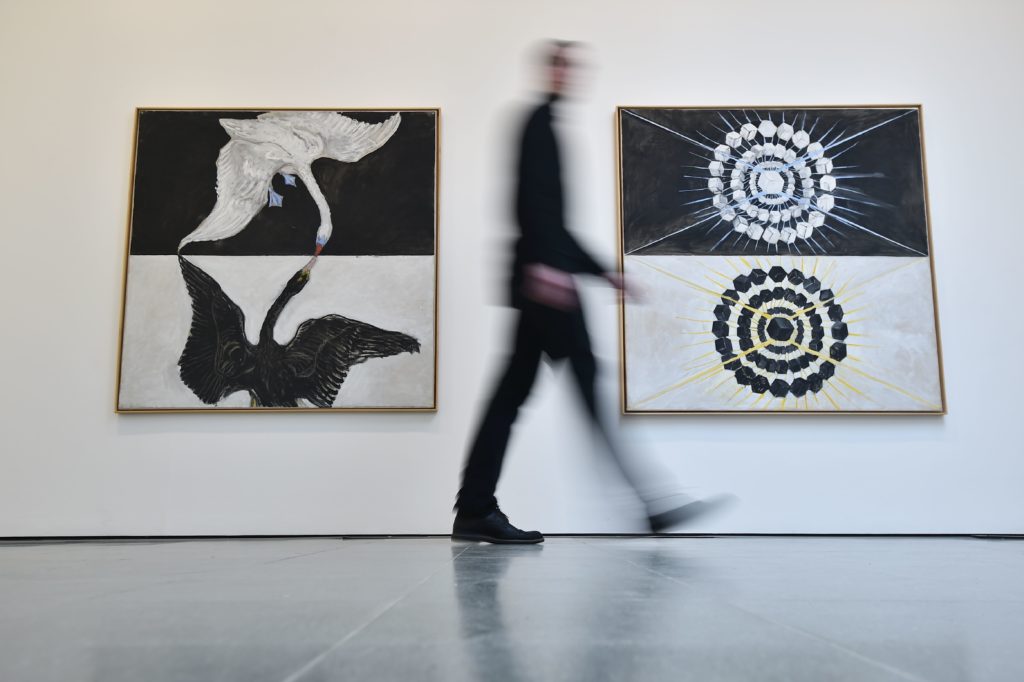
A man walks past art by Hilma af Klint. (Photo: Ben Stansall/AFP/Getty Images)
The Guggenheim’s chief curator Nancy Spector says the museum has been doing “a lot of reflection” about the fact that its program and collection have “not always been as diverse as it they should have been.” The institution looked back on its collection and realized there were “enormous gaps,” she says. “We set benchmarks for ourselves in terms of where we want to go—and our program looks very different right now. We are proud of it and want to continue on that trajectory.”
The Guggenheim’s data shows a consistent focus over the past decade, during which 40 percent of its acquisitions have been of works by women. “It just feels natural at this point,” Spector says. “And it is about excellence more than anything else.”
The museum’s exhibition schedule for the next two years is almost entirely focused on female artists, including Gego, Sarah Sze, Joan Mitchell, Gillian Wearing, and Taryn Simon. “We didn’t set out to do two years of shows by women,” Spector says. “But these were the best projects rising to the top.”
The Historian: the Los Angeles County Museum of Art
Encyclopedic museums that cover thousands of years of history tend to lag behind their Modern and contemporary counterparts when it comes to gender parity—which, considering how few female artists most of us were taught about in art history classes, is not necessarily surprising.
But one museum is bucking the trend and outpacing some of the largest Modern and contemporary museums in America. The Los Angeles County Museum of Art—which collects art from antiquity to the present—has been increasingly focused on bringing more gender parity to its permanent collection. Works by women represent 16 percent of its acquisitions between 2008 and 2018—4 percent more than the San Francisco Museum of Modern Art and 7 percent less than the Museum of Modern Art in New York over the same period.
The findings suggest that the most important factor in creating change is sheer commitment to the cause. While LACMA’s numbers still fall woefully short of parity, they put the museum ahead of other major encyclopedic museums, such as the Museum of Fine Arts in Boston, whose acquisitions over the past decade included just 4 percent of works by women.
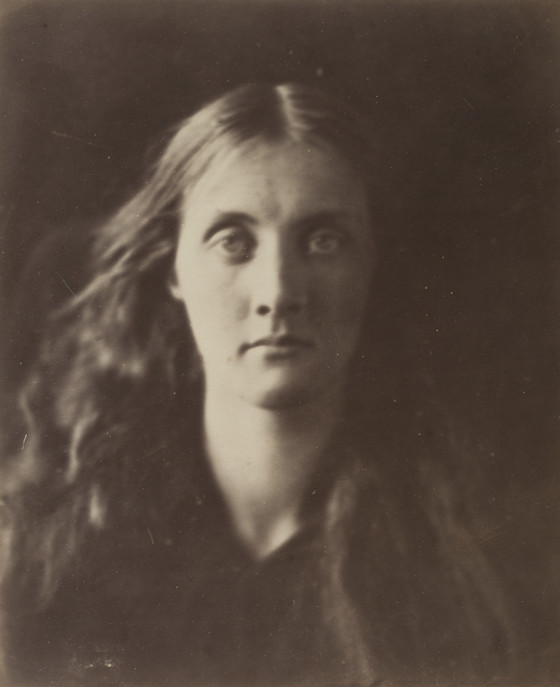
Julia Margaret Cameron’s Julia Jackson (1868). Courtesy of LACMA.
The findings also suggest the importance of local context. The Northeast—which includes New York and Boston—was the worst performing region we examined, acquiring just 8 percent work by women artists over the past decade. Meanwhile, the four institutions we surveyed in Southern California—the Getty (12 percent), LACMA (16 percent), LA MOCA (23 percent), and the Hammer (26 percent)—performed well above the national average and demonstrated a degree of consistency in their commitment year-over-year.
Some suggest the region—and Los Angeles in particular—might be better positioned to present narratives that challenge the status quo because they were established later, have patrons who started collecting later, and for a long time operated outside the glare of the art market.
Michael Govan, LACMA’s director, says change is most evident when “you look at what the curators are presenting for acquisition versus the gifts we get.” He notes that 70 percent of the contemporary works curators have proposed for acquisition over the past five years were by female artists. “That’s pretty dramatic if you think about what younger curators are interested in right now,” he says.
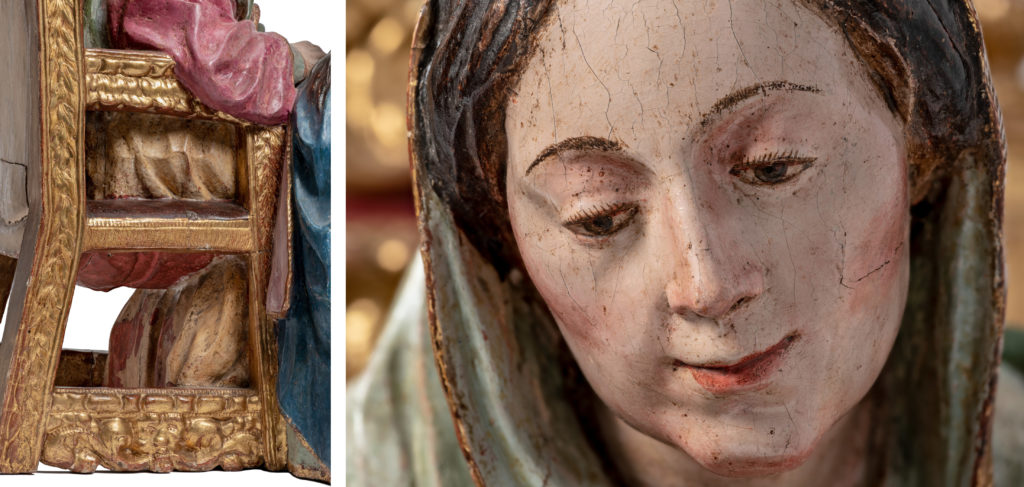
Luisa Roldán, The Education of the Virgin (early 1680s). Photo © Museum Associates, courtesy of LACMA.
Meanwhile, around 35 percent of the historical works presented by curators for acquisition over the past five years were made by women, including The Education of the Virgin by Luisa Roldán, the most significant female sculptor of 17th-century Spain; Lavinia Fontana’s The Holy Family with Saint Catherine of Alexandria (1581); Julia Jackson by Julia Margaret Cameron (1868) and Butterflies and Poem by Ōtagaki Rengetsu (1869)—all of which are now in the museum’s collection.
One of the challenges for encyclopedic institutions is identifying the gender of the often-unknown creators of historical objects, which means LACMA’s figures may actually be higher in some departments than the recorded numbers, according to a spokeswoman. She notes that this issue is particularly likely in textiles and costumes, art of the ancient Americas, South and Southeast Asian art, and Middle Eastern art.
“We have a long way to go to parity—and, yes, it is shocking we are not there in almost the year 2020, and we need to understand why that is,” Govan says. “But I have hope. The curators are pitching huge numbers of women artists. From where I sit, I can see a huge change.”
The Detective: the Dia Art Foundation, New York
Since its founding in 1974 the Dia Art Foundation has played a central role in shaping our understanding of what the boundary-breaking art of the 1960s and ’70s looks like: mostly big, male and macho.
More recently, it has emerged as a powerful force in reshaping that history by focusing on work by artists active during that period whose contributions have largely been overlooked.
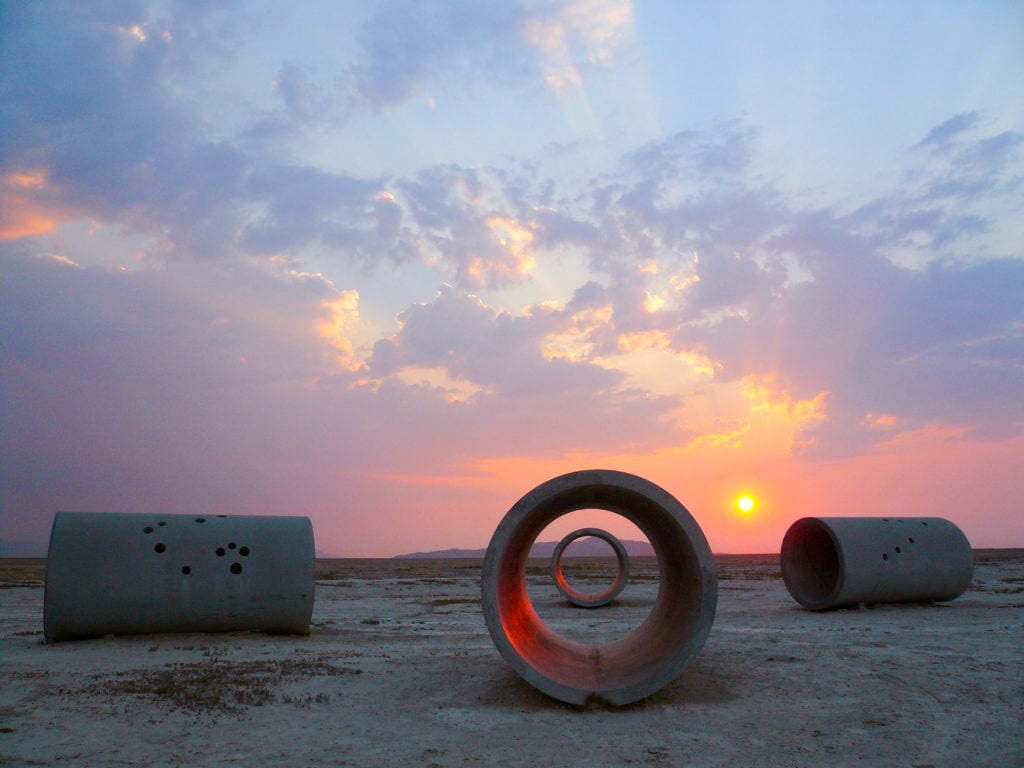
Nancy Holt, Sun Tunnels (1973–76). Great Basin Desert, Utah. Dia Art Foundation with support from Holt/Smithson Foundation. © Holt/Smithson Foundation and Dia Art Foundation/Licensed by VAGA at Artists Rights Society (ARS), NY. Photo: ZCZ Films/James Fox, courtesy Holt/Smithson Foundation.
Most of these artists were women. Over the past four years, Dia has added work by Michelle Stuart, Mary Corse, Dorothea Rockburne and Anne Truitt to the collection, as well as a massive trove of 156 works by little-known German Minimalist sculptor Charlotte Posenenske. In 2018, Dia also acquired Sun Tunnels (1973–76) by Nancy Holt, a sculpture comprising four 18-foot-long concrete cylinders in Utah’s Great Basin Desert. It is the first work of land art by a woman to enter its collection.
Dia’s push to expand the canon is largely due to the determination of director Jessica Morgan, who joined the institution in 2015 from Tate Modern in London. Dia had acquired just 11 works by women in the seven years before she arrived. That number shot up to 177 in the four years since, putting Dia’s overall rate of acquisitions over the past decade at 57 percent work by women, the second highest of all the museums we examined (after the Pennsylvania Academy of the Fine Arts).
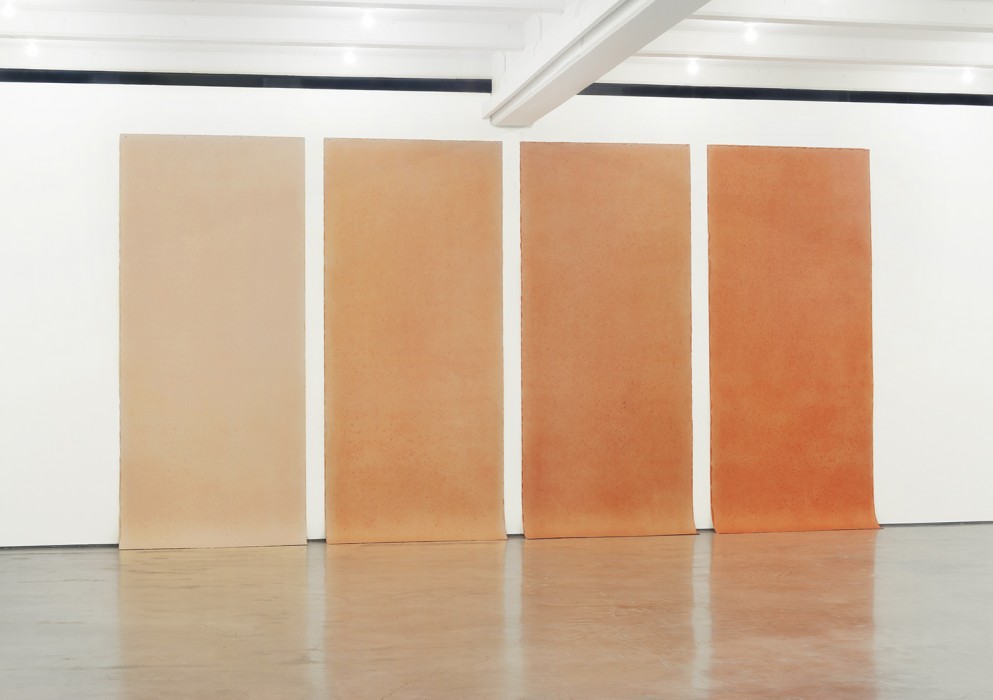
Michelle Stuart, Sayreville Strata Quartet (1976). © Michelle Stuart. Photo: Bill Jacobson Studio, NY.
For Morgan, the mission to expand the canon is not only about creating a richer understanding of history—it’s also a way to keep audiences engaged with a period they might otherwise dismiss as a known quantity. “This doesn’t in any way undermine the institution’s collection,” she says. “It is reinvigorating a moment in time, rather than saying, ‘The 1960s: done, we know it’.”
Defying the pervasive logic that it is harder to find financial support for less mainstream projects, Morgan has raised $78 million for an infrastructural overhaul and to boost the foundation’s endowment by focusing on the distinctiveness of her program.
“There is a sense that if you program certain artists then the money will come, and that may be true,” she recently told In Other Words. “But it’s also true that if you run a different kind of organization, the money will also come.”
While some of Morgan’s peers bristle at the idea of instituting quotas for acquisitions, fearing that it will unnecessarily constrain curators’ freedom, she is an advocate for such an approach. “Personally, I do believe in quotas,” she says. “If change is not happening, then set yourself some goals.”
This story is part of a research project on the presence of work by female artists in museums and the market over the past decade. For more, see our examination of women in museums; our examination of the women in the market; our investigation into maternity leave in the art world; visualizations of our findings; art-world reactions to the data; and our methodology.
